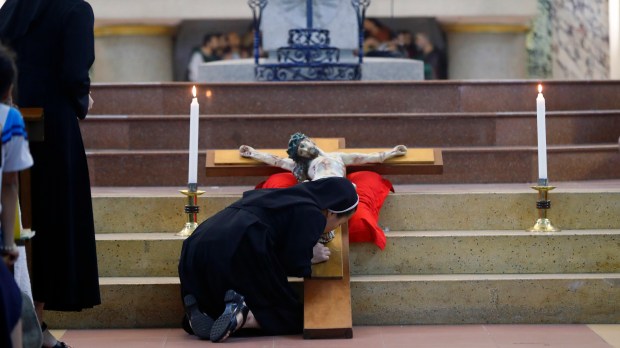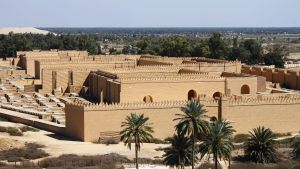Lenten Campaign 2025
This content is free of charge, as are all our articles.
Support us with a donation that is tax-deductible and enable us to continue to reach millions of readers.
It is said that having two opposite feelings at the same time might be a sign of ambivalence. When I experience two conflicting emotions, though, it’s typically not because I’m unconcerned about resolving them. It’s because I can’t.
It can be confusing, like two magnets are tugging at my brain and I’m going to divide in half. I go one way and then another, not because I don’t care but because I care too much.
I’m particularly prone to bittersweetness, the simultaneous emotion of happiness along with sadness. I miss living in my old neighborhood, I think about the house we no longer live in and how my children learned to walk there and ride bikes on the sidewalk out front, sad my school friends have grown up and moved away. I’m nostalgic about the past but at the same time thrilled to have lived the life that has been given to me and wouldn’t trade it for the world. I’m always happy exactly where I am but nevertheless sad that the past is over and gone.
Lent often brings these types of conflicted feelings. We look forward with dread to the shadowy liturgies of Holy Thursday and Good Friday and all the difficult emotions those days bring with them. There’s the commitment to fasting and penance as an act of reparation for sins and a sign that we acknowledge the limitations of this world. We confront the reality of death and the way in which we fall short of perfection. We feel a sense of home here on this earth but also alienation from it, a people in exile still searching out our destiny.
One particularly fascinating bit of conflicted Catholic culture is the fish fry, during which Catholics celebrate penance by literally throwing a huge party. Some people don’t like the fish fry phenomenon because it seems too glib to hang around in the parish gym with a glass of wine and plate full of mac n cheese. But I quite like it. There’s something fitting about penance and joy going hand in hand. As G.K. Chesterton points out about the famously penitential St. Francis of Assisi, he was never gloomy. Quite the opposite — his spiritual commitments led to having the time of his life. Penance heightened his joy.
Two opposite but linked emotions can be revealing. The friction between the two gets us thinking about a deeper, previously unsuspected reality, a mysterious whole lurking just under the surface.
Easter, of course, is the day on which joy and feasting finally overwhelm all thoughts of sadness and penance. Today, we feast. Today, we hunt eggs in the backyard and drink champagne.
Easter has a hidden secret, though.
Even Easter contains its opposite. We cannot get to the heart of the miracle unless we first pass through the Cross. Life and death are connected. They cannot be divided. Even the newborn plant sprouting in the warm spring sunshine is the result of a cracked and buried seed, perhaps abandoned there to languish in the concrete-hard winter soil by a forgetful squirrel, or lost from the beak of a robin.
Like a mirror image of Easter, Good Friday contains a seed of life. By ancient tradition, March 25 is considered to be the historical date of both the annunciation and the crucifixion. St. Augustine says, “He is believed to have been conceived on the 25th of March, upon which day also he suffered; so the womb of the Virgin, in which he was conceived, where no one of mortals was begotten, corresponds to the new grave in which he was buried.”
In other words, this is the date of both birth and death, receiving and releasing, womb and grave, presence and absence, feast and fast. The English poet John Donne comments that on this day, “My soul eats twice, Christ hither and away.” He describes the day as “A circle emblem,” a joining of first and last.
These two concepts are challenging to hold at the same time. It seems to me, though, that the real danger of ambivalence is in ignoring one or the other. If we focus on death and penance, we’ll never live the happy, joyful lives we deserve to live. If we focus only on life, we forget that time is precious and we need to make every moment count.
We forget that love requires sacrifice. We need both life and death. It is death that makes life precious. Good Friday makes the Annunciation a momentous event, and it is the grave that makes Easter the authentic celebration of life we love so much.
It’s a good lesson. I value time with my children so much because I know someday they’ll grow up and move away. I take more joy in my quiet moments when I remember that they shall never be returned to me. The springtime arrives with such exuberance because the memory of winter still lingers.
So I say embrace those realities that stand at opposite poles of your consciousness. They strengthen each other and point to a profoundly beautiful reality that is large and strong enough to hold all of us, with all our strange, conflicted emotions that mingle hope and uncertainty, joy and sadness, penance and celebration. All of it somehow fits into our hearts showing how, perhaps, someway, we really do have an eternal destiny which is so much more than we could possibly imagine. It’s nothing to be ambivalent about, friends.



